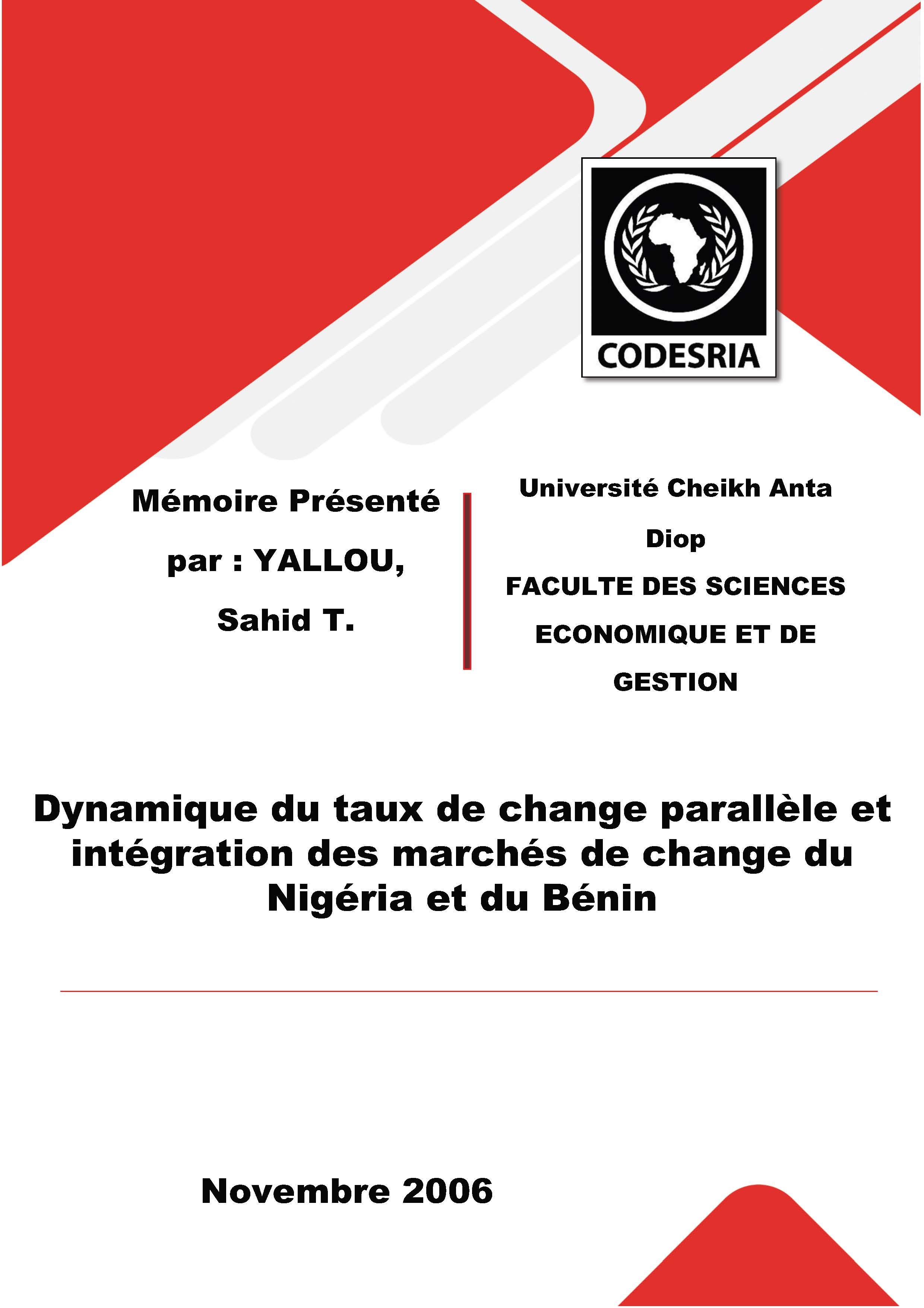Dynamique du taux de change parallèle et intégration des marchés de change du Nigéria et du Bénin
Keywords:
Taux de change, marchés des changes, secteur informel, commerce, Nigéria, BéninSynopsis
The breakdown of Bretton-Woods system makes many currencies floating according
to market conditions. In consequence, exchange rate risk appears as one of major of
uncertainty. As in many developing countries, in Benin there is a parallel exchange
market with free afflssion;;, One common thread in the emergen~e ott these parallel
markets has been the,Iinposition of foreign exchange controls. Paif~ exchange rate
dynamic study's shows some characteristics closed to financial series. With a vector
error correction model, we find there is a high integration between Benin and Nigeria
parallel exchaI\ge markets. Notwithstanding, impulse functions show that the
· parallel exchange r.;i.te fuhdamentals belong to nigerian economy.
Downloads
References
-Agenor, P. R. (1992) "Parallel currency markets in developing countries: theo1,,; evidence' and policy implications", Essays in International Finance, 188, Princeton University.
-Agenor, P. R. (1990) "Stabilization Policies in Developing Countries with a Parallel market for foreign exchange: a formai framework" IMF Staff Papers N°37 (Sept. 1990).
-Alami T. (2000) "An econometric investigation ofdollarization in Egypt", Journal of development and economic policies, Vol 2.
-Alexakis, P. & Apm; N. ({~96) "ARCH effects and Cointegration:·Is.1oreign Exchange MarketEfficient?" Journal ofBanking and Finance 20 (4): 687-97.
-Aloui, C. (2004) « Phénomène de dépendance de court et de long terme de la volatilité des cours de change: cas du marché interbancaire tunisien», Economie Research Forum WP.0315
-Ambassade de France au Nigeria (2004), Fiche signalétique: le Nigeria en bref', MINEFIDREE/ Trésor. . ·, .
-Atingi-Ego M. & Kaggwa Sebudde R. (2003) "Measuring Efficiency of a Market in Transition: The Ugandan Foreign Exchange Market", Bank ofUganda WP/03/02.
-Ayogu, M. (1997) "Empirical Studies ofNigeria's Foreign Exchange Parallel Market II: Speculative Efficiency and Noisy Trading", Research Paper 69, AERC.
-Baele, L., Ferrand~)ir• Hordahl, P., Kryova, E. & Monnet, C., 2004, ."~~asuring Financial Integration l~1he Euro Area", E.C.B., Occasionnai Paper Serie~~NPJî'4, April 2004.
-Baillie, R.T. & Bollerslev, T. (1989) « The Message in Daily Exchange Rates: A Conditional Variance Tale», Journal of Business and Economie Statistics.
-Bangake, C. (2004) « Volatilité de taux de change et mesure d'intervention en Afrique: Implications poui la théorie de la zone monétaire optimale», Séminaire
-Banque Centrale Eriropéenne (2003), Bulletin Mensuël Octobre 2003.
-Bayoumi, T. & Eichengreen, B: (1997) « Exchange rate volatility and.intervention: implications of the theory of·optimum currency areas »;Journal of International Economies.
-Beenstock, M. (1990) "Exchange Rate Dynamics", in Current Issues in International Monetary Economiés, St Martin Press. ·
-Benhabib, A., Benb~ijt"ziane, M. & Ziani, T. (2003) « Marché de Changie Ipformel et Mésalignement: Le ca!? du Dinar Algérien », Faculté des Sciences écorto'miques et de gestion Université de Tlemcen.
-Bekaert, G., Harvey, C.R. & Ng, A. (2005), "Market integration and contagion", Journal of BÙsiness.






